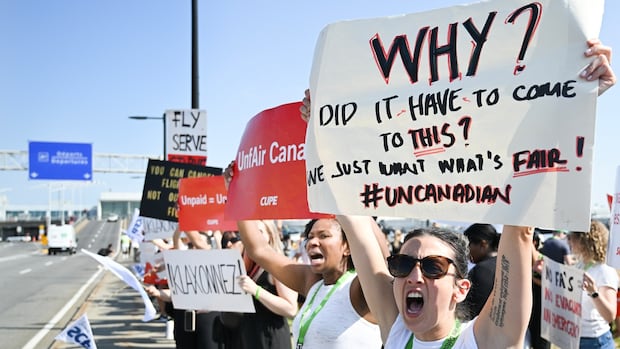Canada is experiencing a rise in labor strikes, with unions cautioning about further actions due to tariffs and the ongoing affordability crisis affecting workers. The Union of National Employees President, Alisha Kang, stated that they are gearing up for upcoming battles and are tired of mere talk without action.
Recent tensions escalated when Air Canada’s flight attendants defied the government’s back-to-work order, risking penalties and imprisonment. However, a resolution was reached the following day. The Prime Minister’s Office affirmed its commitment to strengthening Canada in collaboration with unions, emphasizing the significance of workers.
Despite Prime Minister Mark Carney’s promises to support Canadian jobs during his election campaign, some labor leaders like Kang feel let down by his lack of concrete actions. Kiavash Najafi from the Canadian Labour Congress highlighted the growing worker support for strike mandates amid job losses and rising living costs.
Recent data from Statistics Canada revealed a surge in labor disputes not witnessed in decades, with 6.6 million days lost due to strikes in 2023, the highest since 1986. The federal government has intervened in notable labor conflicts, utilizing Section 107 of the Canada Labour Code to restore industrial peace, sparking legal challenges from unions.
The government’s austerity measures, such as the directive to reduce operational spending by 15% by 2028, have led to job cuts and opposition from unions. Experts like Barry Eidlin from McGill University noted a significant increase in labor mobilization driven by declining job quality and wage stagnation compared to rising living costs.
The Air Canada flight attendants’ defiance set a precedent for unions to challenge government interventions, signaling a shift in labor dynamics. Minister Patty Hajdu defended her swift action to end the Air Canada strike, emphasizing the government’s efforts to support workers’ rights.
The NDP, historically representing labor interests in Parliament, suffered significant losses in the last election, diminishing their influence on labor policies. Unions recognize the current government’s challenges and express readiness to collaborate in the face of external pressures like the trade war.
Overall, the labor landscape in Canada is evolving, with unions navigating a changing political and economic environment to advocate for workers’ rights effectively.



